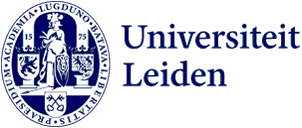
Unique research on inscriptions offers new insights into history Islam
From the very beginning, the Islam has known an oral tradition. It was only two hundred years ago that Muslims starting writing about the history of Islam, on rocks or other hard materials. Arabic epigraphy (study of inscriptions) turns out to be an essential tool in historical genealogy research. Abdullah Alhatlani defended his research on this topic on 20 October. This makes him the first Leiden PhD candidate from Kuwait.

The inscriptions were found in places such as graveyards, mosques and in the mountains. They can be attributed to specific people. ‘The inscriptions tell us more than the genealogical sources that we were already familiar with about the descendants of the prophet Mohammed’, Alhatlani explains. The inscriptions bring to light previously unknown people, for example. This makes it possible to fill in incomplete pedigrees. The inscriptions are also useful in correcting and clarifying information about disappearing family lines.
Unique research
Research into epigraphy in Arabia is relatively new. It started only in 1972, when the Saudi government set up the Department of Antiquities and Museums. Alhatlani is the first researcher to map the connection between the names in the inscriptions and the genealogical sources on a large scale. Where fellow researchers from the United Kingdom, France and Saudi Arabia examined twenty inscriptions, Abdullah looked at a total of 260. 145 of these had not been academically described before.
Reconstruction of pedigrees
The inscriptions that Alhatlani examined were left behind by four families and brought 106 people to light, all of them descendants of the prophet Mohammed. Alhatlani researched who they were exactly, what type of inscriptions they left behind and why. ‘I discovered, for example, that some people from the inscriptions are missing in the genealogical sources. This can help answer the question of whether a family has died out in the course of history’, says Alhatlani. The research also shows that it was very common during the early-Islamic period for multiple generations of the same family to leave inscriptions at the same place. 116 out of 137 inscriptions in one specific place led to just one family. This place was thus visited by the same family for two centuries. ‘This tells us more about different Muslim generations in Arabia, how they fared, but also about the Arabic epigraphy tradition in general’, according to Alhatlani.
First PhD candidate from Kuwait
Alhatlani was thus the first PhD candidate from Kuwait, and he thought that was quite something: ‘I did feel some sort of pressure to deliver. When I had finally obtained my degree, it felt really special. Mainly because it happens more often that researchers from my field obtain their degrees from universities in the United Kingdom or the United States. With a different diploma, people do look at you differently – but in a positive way!’ Alhatlani is starting a new chapter, and will be teaching at Kuwait University as a university lecturer. He will often look back at his times in Leiden: ‘I plan on keeping in touch with Leiden University and all of the friends that I made here. I want to thank my supervisor Petra Sijpesteijn for her help, and the university for its hospitality!’
